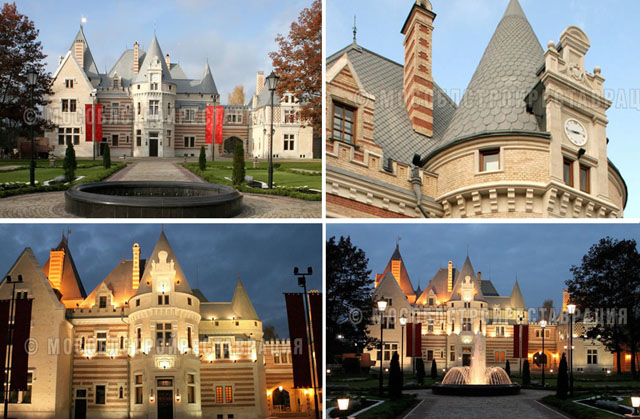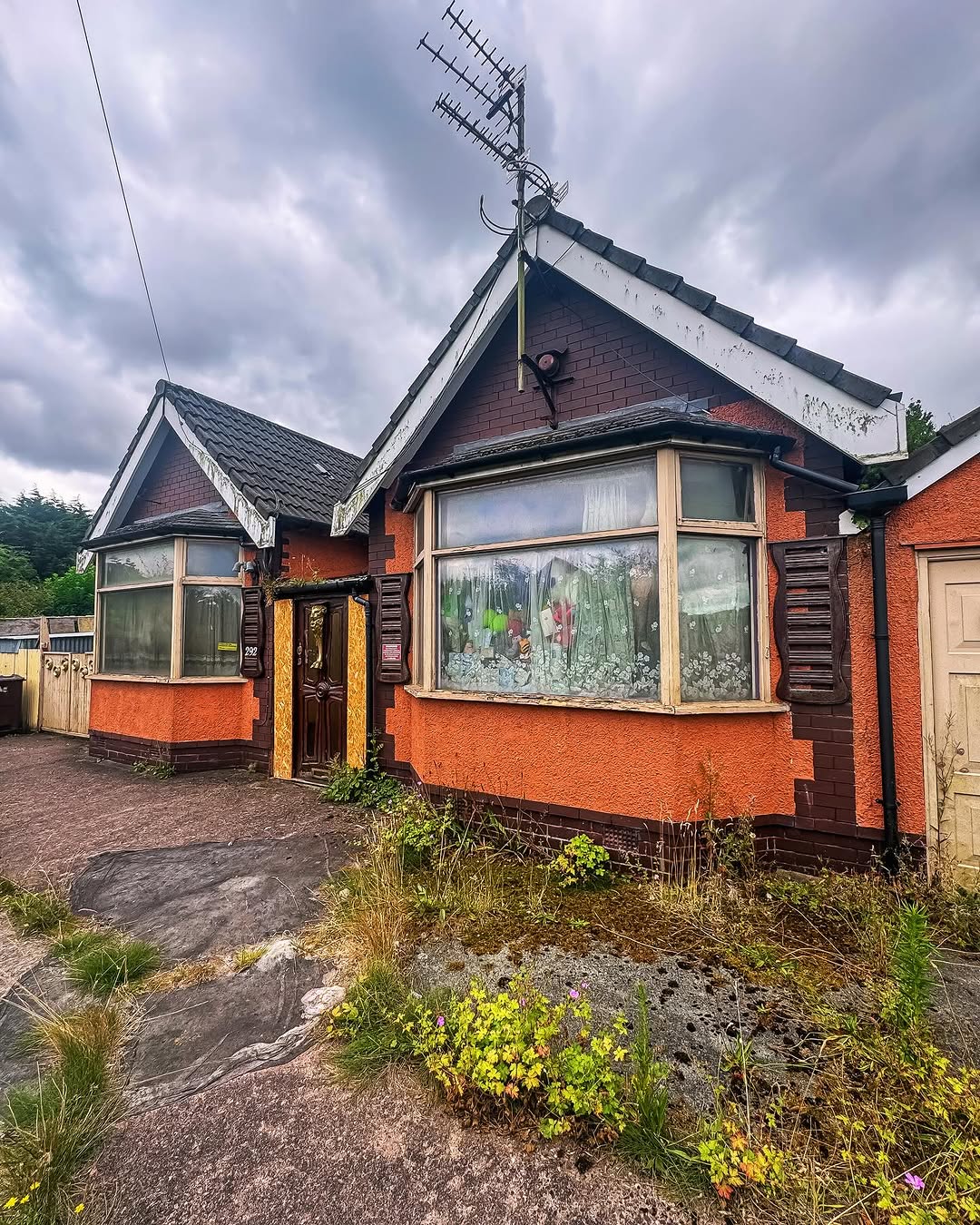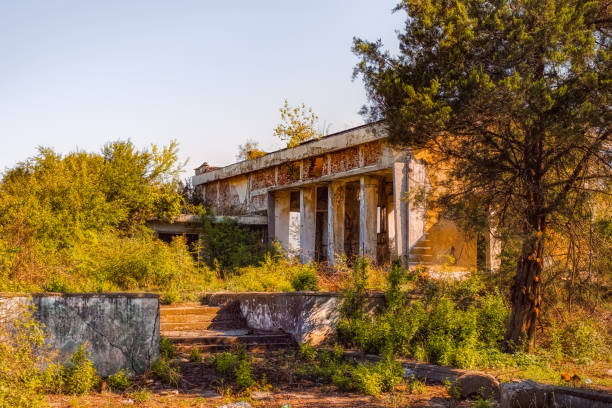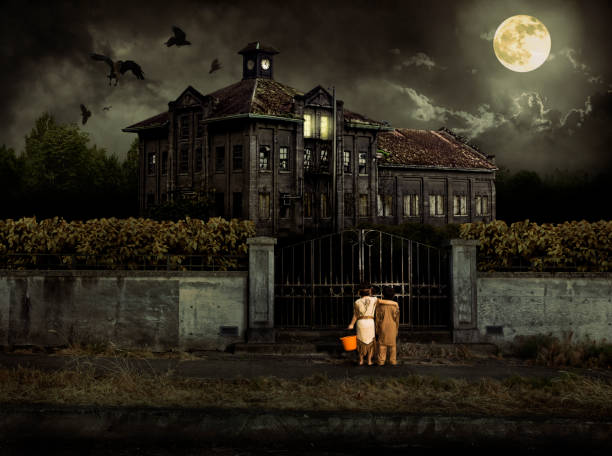I don’t think it looks quite like this. Style-wise you could argue it looks even more like a cinema than it does a culture palace. Chances are it was a two-in-one.
The location is most unusual as well. Normally the culture palaces were laid out on a big square in a heavily residential area, but here it’s kind of just by a busy road in the middle of nowhere really.
Because this out-of-the-way location it allowed this place to become quite alternative, which was rare in the Soviet Union. Exhibitions of non-conformist art also took place here, which would have been unthinkable anywhere else.
From the back side, or is it even the front side, you get to see how it got its name. Named after the river that goes through St. Petersburg. I’ve got a book here about theatres and culture palaces from the Soviet period, and if you look, you can see it in here.
This gives you an idea of how it looked before, but I much prefer this atmospheric photo taken at night during the winter time. I’ve just come across another one here. Again, it’s been covered up, so it doesn’t look very interesting these days, but I’m sure once from a time it was.
Now clearly there were two statues that used to be here, and I’m guessing probably Lenin and Stalin, right? But then again there’s a culture palace, it might have just been young pioneers or workers or something like that.
Judging from the style, it was clearly an old one. So it was always once upon a time it was probably very nice here.
The culture palace from the green area outside, probably with benches where you can sit and relax. There are signs all around like this one, explaining that the building is not structurally safe anymore.
So I mean I don’t know if they’re going to renovate it, that’s why they haven’t knocked it down yet. Or whether they’re not able to knock it down, because as it’s old it’s some kind of registered building.
But, you know, it’s not structurally safe, so I’m not sure what they can do with it really. I found this photo online of the main hall, which seemed interesting, especially the second and third tiers.
So this next classic piece of Soviet architecture, we need to rush to see. Now you might say, well, you know, what’s the hurry? You know, it’s not going anywhere, is it?
Well, yes, it is. It’s going to the ground, it’s going to disappear forever, as you can probably see over my shoulder. And literally, this is the last few days we get a chance to see it. This was as good an example of Soviet modernism as you could have found absolutely anywhere.
It was the Leningrad Youth Palace. And in its day, it was a seriously impressive structure. It opened in 1976 and overtook the Neva Palace as the city’s foremost beacon of freedom, probably due to its even more out of the way location.
Here’s the plan of the concert hall, which could hold over a thousand people, and the ensemble also contained a hotel, sports complex, dance floor, exhibition hall, and many club rooms.
It was far more than just a palace of culture. However, it became an institution. I get the impression that, apart from me, nobody else is particularly sad to see it go.
I guess, for local people, it was a bit of an eyesore, and maybe it didn’t really have a use these days. I think it had closed down as a youth palace a long time ago, and I guess it was just taking up space.
It didn’t look great. And also, you know, a bit of a difficult place to get to. Public transport links to here are not very good either. I would offer you ten guesses as to what’s going to take the place of the youth palace, but to be honest, I think that would be nine guesses too many.
In fairness, I guess the youth palace didn’t stand a chance, you know, when it came to competing with luxury apartments, which are going to sell for an average price of over a million pounds for a small apartment.
You know, they couldn’t compete with that. And of course, all the wealthy people that live in St. Petersburg, whichever many, they need places to live. I guess in the regeneration and gentrification of the region, the poor old youth palace just didn’t fit in.
Actually, I spotted my little eye. I don’t know if you guys have spotted as well. Probably not. So, look at that, some mosaic or someone’s building over there. I guess it’s always a bit fair to see these huge buildings being knocked down because once upon a time, you know, they’d have been planned by architects and they’d have been built probably from people like the Soviet Union and they’d have been a big project and, you know, generations of young people would have come here and no doubt it would have been the pride of the region, if not the city when it was first built.
And then, obviously, a lot of money as well would have been spent on it at the time. Although the transport links aren’t very good, I suppose it is certainly considered a desirable location by the water.
And let’s be honest, the people living in those blocks aren’t going to be used in public transport anyway, so it doesn’t really matter. That being such a good example of Soviet modernism, with all the concrete and everything, it was pretty heavy.
I’m pretty sure that’s not been an easy building to take down. So far, we’ve been seeing the main carcass, but this is obviously some part of it as well, judging by the style. There we go.
We’ve got to have a close-up of the mosaic, don’t we? So it’s on the building just behind the former youth palace. You know what? I mean, it’s the simple one, but it’s quite interesting actually. There’s a lot going on there. I like that.
That building is the type of building that you’ll never see ever again. You know, it’s built with materials from the time and, you know, with techniques from the time and things like that.
I guess it would be considered outdated now. But, you know, even sometime in the future they try for such a strange reason to, you know, do a model of that. Then, you know, it just wouldn’t be the same really.
That’s why it’s a shame to see the lockdown because, you know, they’re relics of the time. And, you know, I’m always sad to see their passing. Of course, it’s not just in St. Petersburg where you can find these decaying culture palaces.
They can be found all over Russia and the former Soviet Union. In fairness, most of them are still functioning in one way or another. But others have closed down since the fall of the USSR as a result of insufficient funding, high operational costs and a lack of profitability.
You sometimes see them for sale, but I doubt they’re a good investment, especially given their cost of a few million dollars. Although many do occupy prime locations, so investors may be tempted by the large amount of land that could be gained by knocking the palace down.
That has already happened in some of these ones since I visited them. I know for sure this unique example from Vrishni Volechok has now been completely demolished.
![]()





